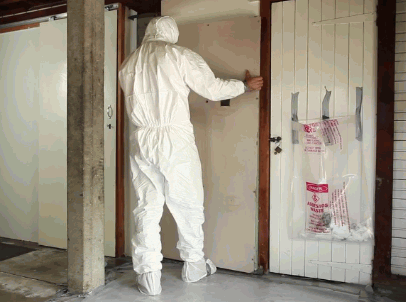Asbestos drywall was commonly used in the construction industry until the late 20th century, posing serious health risks due to its toxic asbestos fibres and hazardous materials.
Understanding the dangers of asbestos exposure, the steps for safe removal, and the associated costs including testing fees and encapsulation costs, is crucial for homeowners and contractors alike.
This guide provides essential information on asbestos drywall, including health risks, removal processes involving certified professionals, and factors influencing costs.
Whether you're concerned about safety, asbestos regulations, or budgeting for removal, this overview has you covered.
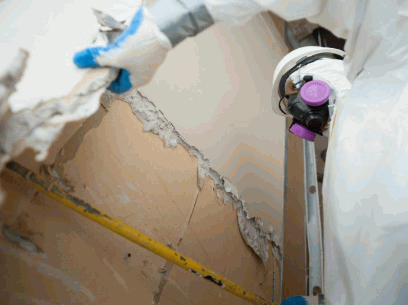
Contents
Asbestos drywall is a type of construction material that contains asbestos fibres, a naturally occurring mineral known for its heat resistance and insulating properties. It was widely used due to its excellent insulation and fire-resistant capabilities. It was commonly used in residential and commercial buildings until the late 20th century when the health risks associated with asbestos exposure, such as lung cancer and mesothelioma, became widely recognised. The Environmental Protection Agency played a significant role in regulating asbestos use.
Asbestos drywall includes various types of asbestos, including chrysotile, amosite, and crocidolite, which can pose significant health complications upon disturbance during renovations or removal activities. Asbestos surveyors often identify these types in buildings.
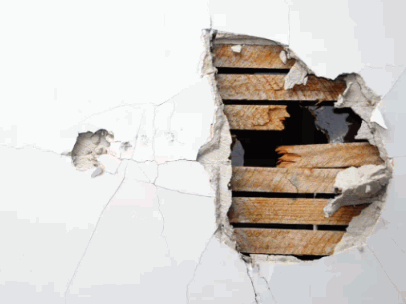
Asbestos plasterboard is considered dangerous due to the serious health risks associated with asbestos exposure, which can lead to conditions such as lung cancer and mesothelioma. Upon disturbance, asbestos fibres can be released into the air, posing a significant risk to anyone in the vicinity, including construction workers and residents.
These tiny, hazardous materials can be inhaled and cause long-term damage to the lungs and respiratory system, making it crucial to handle asbestos plasterboard with care and follow stringent safety protocols. The use of safety equipment is mandatory.
Uncover more: How To Safely Remove Asbestos Sheets From Roof
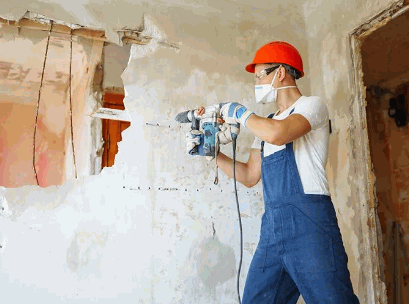
The health risks of asbestos exposure are severe and can lead to life-threatening conditions such as lung cancer and Mesothelioma, which is a type of cancer specifically linked to asbestos fibres. Individuals who are exposed to asbestos over an extended period may develop respiratory issues, thickening of the lung lining, and other chronic health effects. Monitoring is key to prevent long-term exposure. The risk is particularly high among workers in industries where asbestos materials are used, necessitating regular air testing and monitoring to ensure safety. Both residential and commercial properties require vigilance.
Exposure to asbestos is not solely linked to severe conditions like lung cancer and Mesothelioma; it can also result in other significant health problems. One such condition is asbestosis, a chronic lung disease caused by inhaling asbestos fibres, leading to scarring of lung tissue and impaired breathing. Statistics indicate that nearly 5,000 deaths each year in the United States are attributable to asbestos-related diseases, emphasising the crucial need for awareness and monitoring.
Consequently, frequent air quality evaluations around areas where asbestos may be present are vital for safeguarding public health, especially for those in high-risk occupations. By doing so, authorities can protect individuals from unacceptable risk levels associated with these hazardous materials.
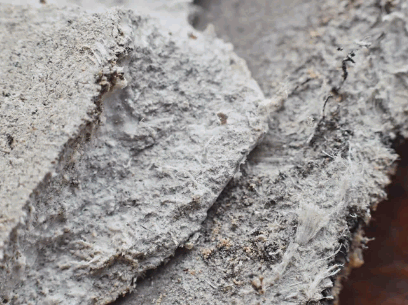
The removal of asbestos plasterboard is a complex process that must be conducted by certified professionals trained in asbestos abatement and removal services to ensure both safety and compliance with regulatory standards. Proper asbestos maintenance is critical during this process.
This process typically begins with a thorough asbestos survey to identify the presence and extent of asbestos contamination, followed by either removal or encapsulation methods. Asbestos encapsulation is often chosen to prevent fibre release. Encapsulation involves sealing off the asbestos material to prevent fibres from becoming airborne, while removal requires specialised equipment and safety measures to maintain air quality and protect workers from hazardous exposure. Professionals use this approach to adhere to strict asbestos regulations.
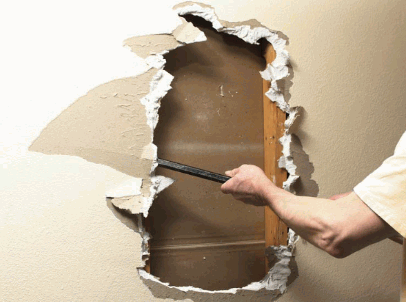
The cost of asbestos plasterboard removal can vary significantly based on several factors, making it essential to understand what influences these costs. Factors such as the amount of asbestos plasterboard to be removed, the location of the plasterboard within the structure, and the accessibility of the materials all play a critical role in determining the overall costs.
Additionally, testing fees, encapsulation costs, and the need for hazardous waste disposal also contribute to the final price of the removal services provided by trained professionals. Compliance with asbestos regulations also adds to the costs.
The amount of asbestos plasterboard present in a given space plays a significant role in determining the overall asbestos removal cost. Accurate air quality testing and asbestos surveys are crucial for proper cost estimation.
In particular, greater quantities of the hazardous material necessitate more extensive labour and resources for safe handling, which can substantially elevate expenses.
When assessing the quantity of asbestos materials, professionals often employ a variety of methods, including visual inspections and sampling techniques, to ensure accurate evaluation. An asbestos surveyor is typically involved in this process. This assessment informs the required safety measures and disposal procedures, as inadequate handling can pose serious health risks.
Ultimately, the careful evaluation of the material ensures compliance with stringent safety regulations, while also helping homeowners budget accordingly for the necessary remediation efforts.
The location of asbestos plasterboard within the structure can greatly affect the complexity and cost of its removal.
When considering various locations such as pipes, roofing, flooring, and walls, each presents unique challenges that require careful assessment. For instance, plasterboard situated near plumbing and pipes can complicate the process due to the need to manage water damage risks.
Likewise, roofs and roofing materials may necessitate specialised equipment for safe removal, particularly if they are steep or difficult to navigate. Floors and flooring materials often pose accessibility issues, especially in buildings with tight or confined spaces, potentially increasing labour costs. Walls might harbour accumulated hazardous materials, making the removal more hazardous.
Understanding the implications of each location is essential for developing a comprehensive and safe removal strategy.
The accessibility of asbestos plasterboard is another critical factor influencing the cost and complexity of removal services.
When assessing the removal process, it is important to understand that ease of access can significantly streamline operations and reduce overall expenses. Effective asbestos maintenance and asbestos safety measures help in reducing costs. When materials are within easy reach, contractors can efficiently execute the removal with minimal interruptions. This efficiency can lead to lower labour costs, as a smaller crew may be sufficient to complete the job quickly. Conversely, challenging locations may necessitate specialised equipment and additional labour, increasing the financial burden.
On the other hand, difficult-to-reach materials often require more planning and resources, complicating the project and inflating costs. This contrast highlights the importance of location when budgeting for asbestos removal.
Different types of asbestos drywall may carry varying levels of risk, which can influence the removal approach and associated costs.
This variation arises from the inherent properties of the different asbestos types, most notably Chrysotile, Amosite, and Crocidolite. Each type is used in various asbestos products and requires specific removal processes. Each of these species exhibits unique characteristics, influencing both health risks and safety protocols.
Understanding the distinctions between these asbestos types is crucial, as they directly impact the safety measures needed during removal and disposal, ensuring that the process meets regulatory requirements and protects public health.
Containment and disposal requirements for asbestos drywall are essential to ensure safety and compliance with environmental regulations.
To effectively manage the hazards associated with asbestos, contractors must adhere to specific protocols aimed at minimising exposure during removal and disposal. This includes implementing effective containment strategies, such as:
In terms of disposal, it is crucial for the contractor to understand the legal requirements surrounding hazardous waste management, which often includes notifying relevant authorities, utilising licensed disposal facilities, and following proper waste labelling protocols. Failing to comply can result in significant financial penalties and increased costs due to legal implications, making it imperative to prioritise safety and legality throughout the process.
Labour and equipment costs are substantial components of the overall expenses associated with asbestos removal services.
These expenses often vary significantly, influenced by factors such as the scope of the project, the size of the contaminated area, and the specific techniques employed during the removal process. For instance, rates for qualified professionals can range from £75 to £150 per hour, depending on their level of experience and the complexity of the task at hand.
Meanwhile, the cost of necessary equipment, such as high-efficiency particulate air (HEPA) filters, protective clothing, and containment materials, can add another few hundred to several thousand pounds to the total bill.
Thus, understanding these cost factors is essential for anyone facing the daunting challenge of ensuring a safe and compliant asbestos removal process.
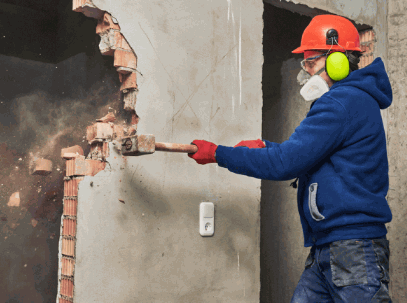
The average cost of asbestos plasterboard removal can vary widely, typically ranging between £1,200 and £3,000 based on several influencing factors such as the size of the area, the amount of asbestos present, and the specific services required for removal and disposal.
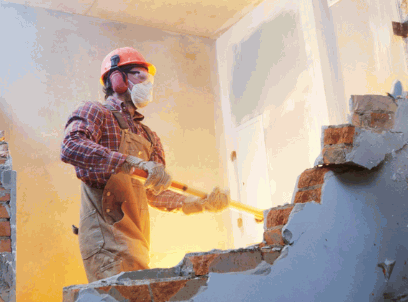
Choosing a reliable asbestos removal company is crucial for ensuring the safe and effective handling of hazardous materials. It is important to look for professionals who possess the necessary licences and certifications, demonstrating their compliance with local regulations and industry standards for asbestos abatement.
A reputable company will have extensive experience in asbestos removal services and a proven track record of maintaining safety and air quality during the removal process.
When selecting an asbestos removal company, checking for the necessary licences and certifications is critical to ensure compliance with safety regulations.
These credentials are not merely formalities; they encapsulate a commitment to maintaining the highest standards in hazardous materials management. For instance, in regions such as the United States, companies must typically possess EPA accreditation for asbestos abatement and, in certain states, specific state licences tailored for asbestos work. Similarly, in the UK, businesses are required to have a valid Asbestos Licence issued by the Health and Safety Executive (HSE). This level of certification not only indicates a company's expertise but also assures clients that they will adhere to vital safety protocols.
Ultimately, verifying these qualifications is crucial for ensuring that the chosen company prioritises safety and professionalism throughout the asbestos removal process.
Requesting references and reading reviews from previous clients is an essential step in assessing the quality of asbestos removal services.
When looking to evaluate the effectiveness of such services, it becomes crucial to gather insight from those who have firsthand experience. Start by asking for a list of references from the service provider, ensuring that you reach out to several of them for a well-rounded perspective. Pay close attention to the level of satisfaction expressed by these clients, focusing on their comments regarding project completion timelines, overall communication, and the professionalism of the team involved.
In addition, online reviews on platforms dedicated to consumer feedback can provide further context, helping you determine the overall reputation of the company. By asking specific questions about their past performance, you can better gauge the likelihood of achieving a successful and timely resolution for your own asbestos removal needs.
Obtaining multiple quotes from different asbestos removal professionals can provide valuable insights into the average costs and services available. This practice not only helps in identifying the most competitive pricing but also in understanding the range of services each company offers.
By reviewing various estimates, individuals can uncover significant variations in pricing due to differences in the methods and equipment used.
It is essential to delve deeper into each company's reputation and safety measures, as these factors play a crucial role in the overall experience and peace of mind you may expect.
Ultimately, making an informed decision should involve balancing both cost and quality, resulting in a solution that safeguards both your property and well-being.
Inquiring about insurance coverage is vital when choosing an asbestos removal company, as it protects both the homeowner and the workers involved in the project.
This insurance not only ensures that the firm is able to handle any unforeseen accidents or incidents but also provides financial security for all parties involved. The primary types of insurance coverage that a reputable asbestos removal service should possess include public liability insurance and employers' liability insurance.
These coverages are essential in mitigating risks associated with asbestos exposure and handling, safeguarding against any potential liabilities that may arise during the removal process.
Having these types of insurance not only secures the well-being of the staff but also grants peace of mind to homeowners, knowing they are protected from financial repercussions should anything go wrong.
Asking potential contractors about their removal process can provide critical information about their safety protocols and operational procedures, which is essential for ensuring a safe and efficient environment during what can be a potentially hazardous situation.
Understanding the intricacies of their method can greatly enhance your peace of mind. It is vital to inquire specifically about several key aspects of their approach, such as:
These elements are crucial for understanding their commitment to safety, ultimately enabling a more informed decision when choosing the right contractor.
